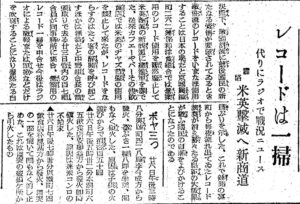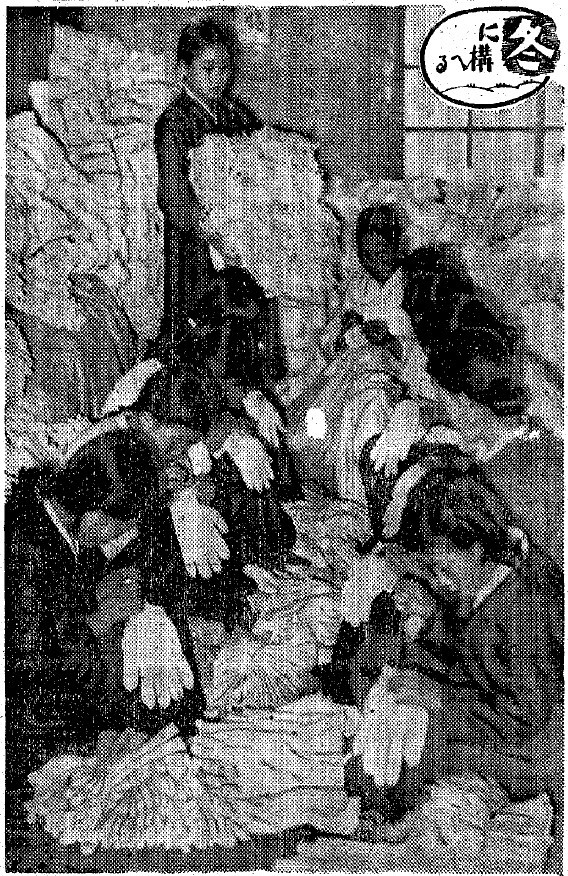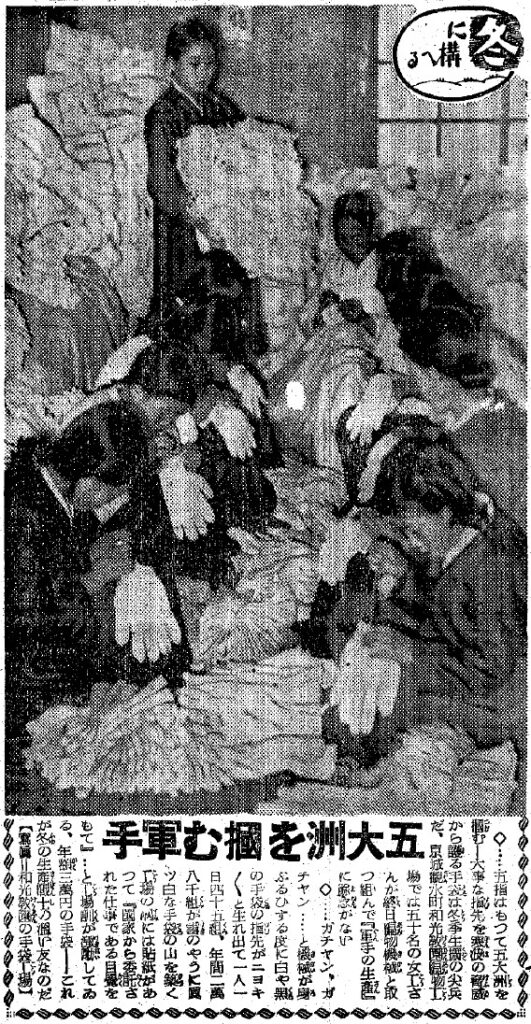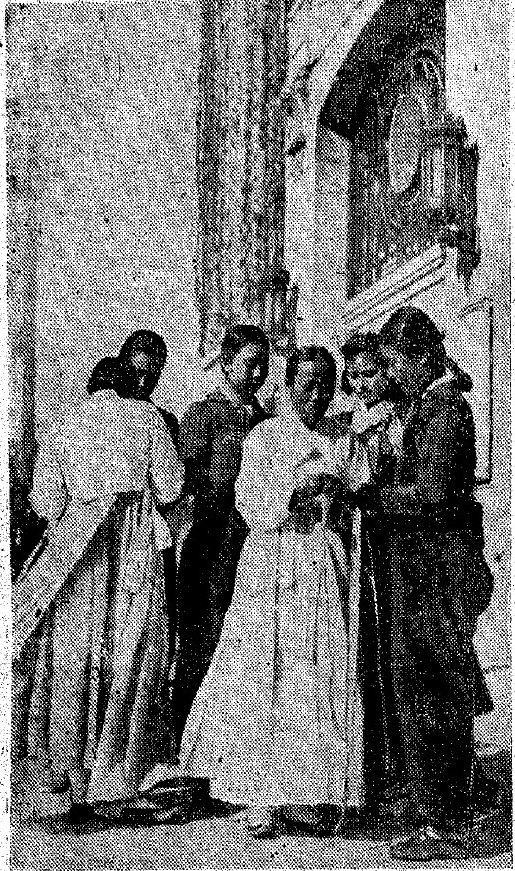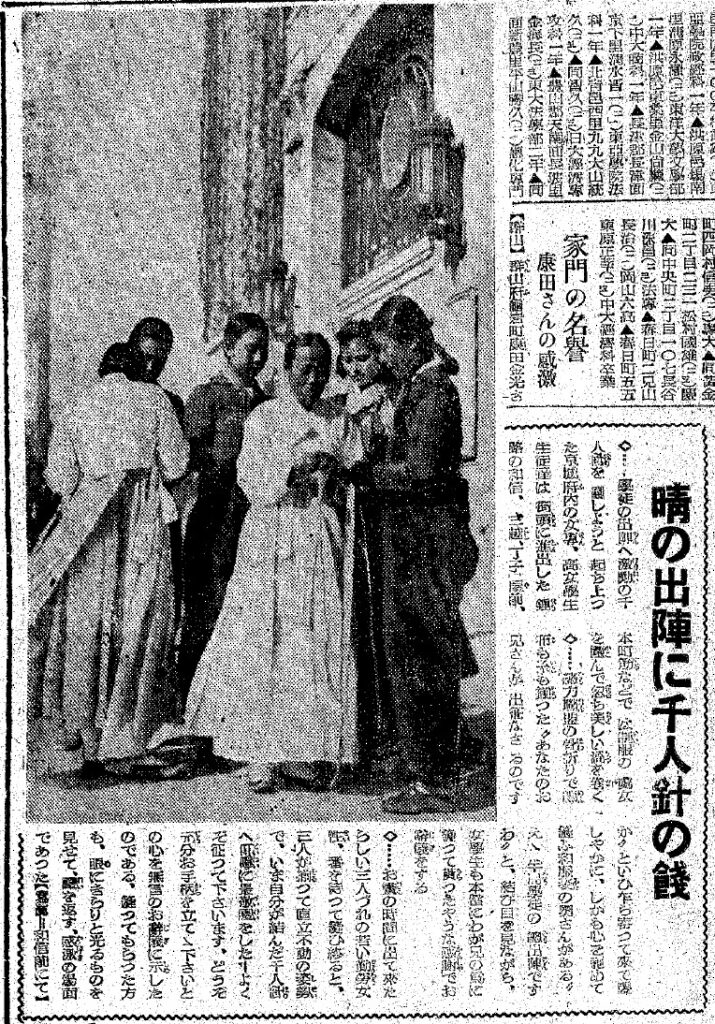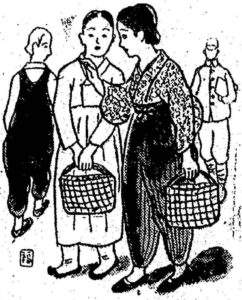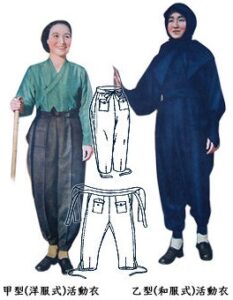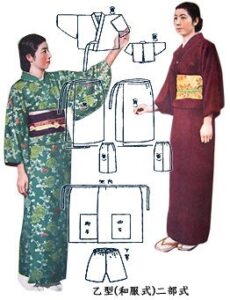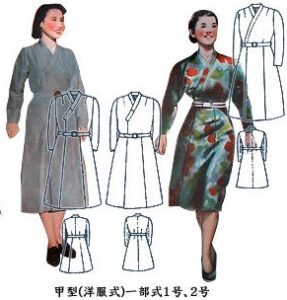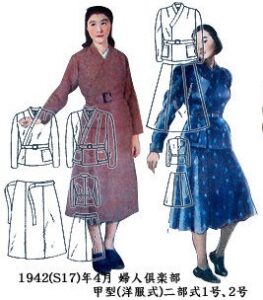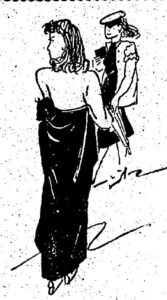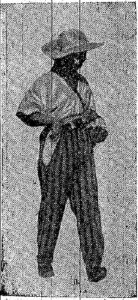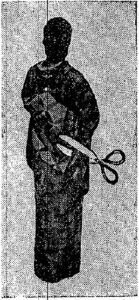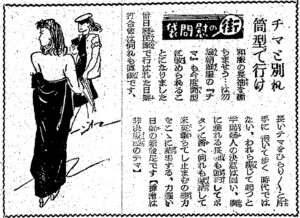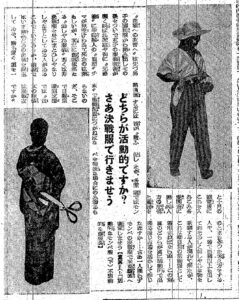Thus far, we've seen how Koreans of various walks of life, including comfort women and 'model Korean families' who mainly spoke Japanese at home, have been quoted in the colonial newspaper obsequiously praising Imperial Japan while denigrating their own Korean identities, essentially becoming puppet voices for the colonial regime. In many of these cases, it is doubtful that their words, which often repeat formulaic propaganda stock phrases typical of the era, reflected their actual opinions. I believe it's reasonable to assume that, oftentimes, various forms of pressure were applied on the Koreans to say the right things. After all, we've seen how 'ideological criminals' have been placed into re-education camps under 'judicial protection', and their family members detained and interrogated. In this post, I am examining the Korean Literary Association (조선문인협회/朝鮮文人協會), which was another puppet voicebox for the colonial regime, and reading the words of three of its members: Yu Jin-oh (유진오/兪鎮午, 1906~1987), Choi Jae-seo (최재서/崔載瑞, 1908~1964), and Lee Seok-hoon (이석훈/李石薫, 1907~?).
The Korean Literary Association was founded in 1939 to nurture Korean writers to serve the colonial regime. The association encompassed both ethnic Korean writers who wrote in Korean and Japanese and ethnic Japanese writers who were residents of Korea and wrote in Japanese, and the works of both groups were considered to be 'Korean literature', regardless of how different their cultures and perspectives may have been. In this way, Korean literature of this era became heavily politicized to serve the political interests of Imperial Japan. The association published a literary periodical that was published in both Japanese and Korean, but by May 1942, the Korean language edition was discontinued in the name of 'Imperialization' and 'Japanese-Korean unification'.
In the postwar era, the three members' lives took very different courses. Yu Jin-oh became one the early drafters of the South Korean Constitution, worked as a legal scholar and as a prominent conservative politician in South Korea for many years until his death in 1987. Choi Jae-seo continued his academic activities teaching English literature at South Korean universities until his death in 1964. Lee Seok-hoon was arrested by the North Korean People's Army at the outbreak of the Korean War in July 1950, and his whereabouts are unknown to this day.
(Translation)
Gyeongseong Ilbo (Keijo Nippo) August 27, 1943
The Second Day of the Greater East Asia Literature Convention
Koreans Speak Out with Dignity and Determination
Mr. Tsuda and Three Others Take Active Roles
[Tokyo Telephone Report] On the second day of the Greater East Asia Literature Conference held at the Greater East Asia Hall on August 26, Yu Jin-oh (유진오/兪鎮午) and Choi Jae-seo (최재서/崔載瑞), representing the Korean peninsula, delivered remarks on "The Establishment of the Idea of Wartime Literature" and "The Conscription System and the Literary Movement in Korea," respectively, revealing the positions and goals of Korean literature within Greater East Asian literature. Tsuda Tsuyoshi proposed that "all literary figures of Greater East Asia rise up", which made a great impression in the entire hall. Of the 24 speakers who gave speeches on this day, the three who hailed from Korea emphasized the holy mission and firm determination of the Korean peninsula to complete the Greater East Asia War and to build the Greater East Asia Co-prosperity Sphere through literature, and they expounded extensively on the fact that the Korean Literary Association has an extremely important role in the wartime literary movement to unite the various regions of Greater East Asia in the decisive war, and they made this point fully understood by the representatives of each region. The following is a summary of the three speakers' remarks:
Mr. Yu Jin-oh (유진오/兪鎮午): The Greater East Asia War has entered the decisive battle phase, so those on the front lines and those on the home front must unite as one to concentrate on the goal of destroying the enemy. Those of us in charge of cultural affairs must clarify our mindset. That is, we must clarify how we position our mindset in order to fight against the concept of "selfishness" that forms the basis of the British-American school of thought that has dominated the world for many years. We must beat down that concept of "selfishness" and rise up to the great spirit of "harmony" that is the original spirit of East Asia that has been preserved in its purest form and developed to the highest degree in Japan. There is no literature or culture apart from winning this war. Literary supremacism (literature for literature's sake) is only a British-American idea. I believe that the goal of wartime literature should be to win the war.
I am convinced that, in ancient times, Korea embraced the culture of the Asian continent as its own, and at the same time functioned as a cross-bridge, so to speak, in transmitting the culture of the Asian continent to mainland Japan. With Korea now a part of Imperial Japan, there has been a role reversal, and Korea has come to share the mission of transmitting the spirit and culture of Japan to all regions of Asia. My conviction stems from the conscription system that went into effect in August of this year, and it is no exaggeration to say that the problems between Korea and Japan have come to an end with the implementation of the conscription system. It is a great pleasure for me to be able to inform people in the various regions of Greater East Asia of the recent renewal and reactivation of the cultural movement in Korea, which was precipitated by the implementation of the conscription system.
Mr. Choi Jae-seo (최재서/崔載瑞): It was groundbreaking that the Korean literary world, which had been relatively strongly influenced by European literature, decided to break with the liberal literary world at the outbreak of the Greater East Asia War and embrace the Japanese worldview. However, it should be appreciated that the realization of the conscription system deeply contributed to this development. The first effect of the implementation of the conscription system was that Korean-language literature, which was historically written in Hangul, has been converted into Japanese-language literature. The second effect was a decisive change in the worldviews and attitudes toward life of the individual writers. I call this the grasping of the concept of one's own ancestral nation. Previously, the Korean intellectual class fundamentally lacked something, as if the wheels were missing from the axle. Because of this, the Korean intellectuals were unable to unleash the passion welled up in in the depths of their souls to move forward in a holistic manner. The implementation of the conscription system has made them come to the realization that they have to defend their own country with their own intellects and their own lives, and the idea of one's own ancestral nation sprang up in the hearts of the Korean literary intellectuals.
Korean literature is no longer a narrow literature based only on Korea. It can be clearly said that Korean literature is now a literature for the 100 million people of Imperial Japan who have established a space for the 27 million people in the Korean-language sphere, and also for the billion people of Asia.
Mr. Tsuyoshi Tsuda: As the Greater East Asia War enters its decisive phase, the cultural movement must also become systematized into a wartime system, and become strategized to push forward to destroy the United States and Britain. It is time for all cultural people of Asia to rise up to the occasion this autumn. We must establish a cultural organization with long lasting structures and methods throughout East Asia, but for the time being, I propose the following plan:
-
- On the Day of the Imperial Rescript on December 8th, literary writers from each region should hold a writers' convention in their respective regions. I would like each region to send representatives to each other in an effort to raise wartime consciousness. For example, we should ask for Korea, Manchuria, and North China to send representatives to each other, and it would also be a good idea to have the Japan Literary Association send representatives too.
-
- The periodical to be published after December 8 will include an editorial issue and a commemorative issue, which will contain wartime literature and expound on knowledge on how to the defeat the United States and Britain.
Mr. Kikuchi Hiroshi, the chairman, spoke in favor of Mr. Tsuda's proposal.
Greater East Asia Literature Prize
First Prize Winner Announced Today
Contestants for the first Greater East Asia Literature Prize, which is awarded to writers in the Greater East Asia Co-prosperity Sphere for their magnificent works, are being carefully screened by the Screening Committee, but since no works were officially selected for the first prize and the Southern Co-prosperity Sphere was not selected due to the screening deadline, several authors from mainland Japan, Manchuria, and the Republic of China were secondarily selected. The names of the winners and their works will be officially announced at the Greater East Asia Literature Conference in the afternoon of August 27.
Source: https://www.archive.org/details/kjnp-1943-08-27
Gyeongseong Ilbo (Keijo Nippo) September 19, 1942
Ideological Warfare and Propaganda Warfare
By Maki Hiroshi [translator's note: his Korean name was Lee Seok-hoon (이석훈/李石薫)]
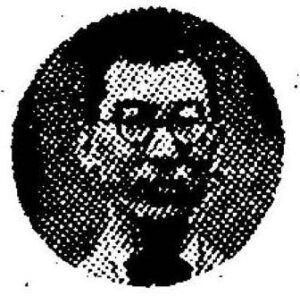 |
| Maki Hiroshi, also known as Lee Seok-hoon |
If we can sum up the essence of modern times, we can describe it as a war of ideology, simply because victory by force of arms does not necessarily mean true ultimate victory. Germany's defeat in World War I is a perfect example of this. As General Ludendorff said in his autobiography, "Germany's defeat in the World War was not my own fault, but rather the fault of the socialist fools". The socialist defeatism and anti-war ideology on the home front ultimately brought victory by military force to naught. In particular, the Greater East Asia War was, from its very inception, a struggle between the worldviews of two sides: that is, an ideological struggle between the New Order and the Old Order. It is difficult to say that the war will be completed simply by driving the United States and Britain out of the East Asian landmass, because the war is not fought for the sake of obtaining oil from the Dutch East Indies or rubber from Malaysia. Our war will not be over until we first thoroughly exterminate the British-American mentality that is nestled in the brains of 100 million people, and also cleanse out every last drop of the British-American mindset that permeates all the peoples of Asia.
I do not know whether the Japanese, who are more patriotic than any other people in the world, are praising the Japanese spirit with the same fervor and organization as the Americans and the British praise democracy, or whether they are even developing this for ideological warfare. For example, in the United States, leading scholars and writers have spent many years praising and promoting democracy. The influence of these efforts has been so great that even the ignorant masses are willing to give up their lives in defense of democracy.
The East Asia Co-prosperity Sphere includes many peoples, and in order to make these different peoples truly regard Japan as their ally, we must not stop at mere temporary propaganda efforts. Rather, we must give them something that will deeply penetrate them ideologically. Propaganda warfare is the rudimentary stage of ideological warfare, and is of course important in its own right, but unless it is backed up by the truth, it may even backfire in some cases. Ideological warfare is long lasting propaganda based on the truth, and those of us involved in writing are keenly aware of our great responsibility in this regard. (The writer is the executive secretary of the Korean Literary Association)
Source: https://www.archive.org/details/kjnp-1942-09-19
(Transcription)
京城日報 1943年8月27日
大東亜文学者大会の二日目
堂々・決意述ぶ半島
津田氏ら三氏活躍
【東京電話】二十六日大東亜会館で開催の大東亜文学者大会二日目に於いて半島を代表して兪鎮午氏は『決戦文学の理念確立について』、崔載瑞氏は『徴兵制と朝鮮に於ける文学運動』と題してそれぞれ発言を行い、大東亜文学に於ける半島文学の立場とその目標を明かにし、津田剛氏また『大東亜文学者総蹶起』に関する提案をなし全議場に多大の感銘を与えたが、この日の発言者二十四名中朝鮮は実に三名を占める活躍ぶりで文学を通ずる大東亜戦争完遂、大東亜共栄圏建設に対する半島の聖なる使命と確固たる決意を強調し、大東亜諸地域を打って一丸とする決戦文学運動において朝鮮文学会が極めて重要なる役割を持つことを遺憾なく闡明し、且つ各地域代表にこの点を充分に徹底せしめた。三氏の発言内容は次の通り。
兪鎮午:大東亜戦争は愈愈決戦段階に入ったが、前線銃後一体となって敵撃滅に濾過しなければならんこの際、われわれ文化部面を担当するものは心の持ち方、即ち精神の置き方を明確にせねばならんが、永年全世界を風靡した米英流思想の根底をなす『我』と闘い、これを叩き伏せて東洋本来の偉大なる『和』の精神、一口にいえばわが日本に於ける最も純粋なる形に於いて保持され、且つ最高度にまで発展せしめられたる東洋の道義の精神に立ち揚がらねばならない。この戦争に勝つことを離れて文学も文化もない。文学至上主義の如きは米英流の思想に過ぎない。決戦文学の目標は戦に勝つという一点にあると思う。
朝鮮は古来大陸文化を自己のものとなすと同時に内地に伝える、いわば橋梁のような役割を果して来たのであるが、今や逆に皇国日本の一翼として日本の精神および文化をアジアの全地域に伝える使命を一端を担うに至ったと確信する。この確信は実に本年八月から実施された徴兵制に由来するもので、既往の内鮮間の問題は徴兵制実施を以て終止符が打たれたというも過言でない。最近朝鮮の文化運動が徴兵制を転機として頗る清新活発の様相を呈して来たことを各地域の方々にお伝え出来ることは自分としても大いに喜びとするところである。
崔載瑞氏:比較的強きヨーロッパ文学の影響の下にあった朝鮮文学が大東亜戦争勃発と同時に自由主義文学との決裂を決意し、日本的世界観に立ち這入ったことは当然のこととはいえ、画期的な事柄であった。しかしこれにも増して深刻なる影響を与えたものは、なんといっても徴兵制の実現である。徴兵制が与えた第一の影響は歴史を有する諺文で書かれた諺文文学が国語文学ヘ転換せんとしつつあることで、その第二は個々の作家の世界観、人生態度に決定的の変化を及ぼしたいということである。自分はこれを祖国観念の把握と呼んでいる。従来朝鮮の智識階級は根本的になにかが欠けていた。いわば車の軸が抜けていたために腹の底からこみ上げて来る情熱を以て全人格的の前進が出来ないといった状態であったが、徴兵実施により自己の智と命を以て国土を防衛するということが現実の事実として現れ、朝鮮の文学者の胸に湧然として祖国観念が湧き上がって来たのである。
朝鮮の文学は最早朝鮮のみを基礎とする狭い文学ではない。これは二千七百万の諺文圏を整えた一億国民のための否、アジア民族十億のための文学であるとはっきり申し上げることが出来る。
津田剛氏:大東亜戦争の決戦段階に臨んで文化運動も決戦体制化し、これを戦略化して米英撃滅に邁進しなければならん。アジアの全文化人は一人残らず蹶起すべき秋である。本来ならば、全東亜を通じて恒久的組織と方法とを持つ文化団体を樹立せねばらんが、差し当たっての方策として自分は次の案を提案したい。
一、来る十二月八日の大詔奉戴日は各地域の文学作家は各地域毎に作家大会を開催。各地域相互に代表者を派遣して戦時意識の昂揚に努めるようにしたい。例えば朝鮮に於いては満州、華北などよりも代表者の派遣を求めるが如き方法を取るもので、日本文学報国会より参加代表を派遣するものも又一案であろう。
二、十二月八日後の定期刊行物は編輯号、記念号を発行して戦う文学を掲載して米英撃滅の知識を闡明したい。
なお津田氏の提案に対して議長菊池寛氏より賛成意見の開陳があった。
大東亜文学賞
初の受賞者、きょう発表
【東京電話】大東亜共栄圏に在住する作家の雄渾なる作品に対して受賞される第一回大東亜文学賞は審査委員会の手によって慎重銓衡を進めているが、第一回分には正式受賞に該当する作品がなく、南方共栄圏は審査期日の関係その他で選に入りぬので結局日本、満州、中華民国三国の数名が次賞の形式で賞を受けることになった。なお第一回受賞者の氏名作品名は二十七日午後の大東亜文学者大会の席上正式発表される。
京城日報 1942年9月19日
思想戦と宣伝戦
牧洋
近代から煎じつめれば、思想戦であるということは、単に武力の勝利が真に最後の勝利を意味するものでないからである。第一次世界大戦におけるドイツの敗北は、この例の尤なるものであるが、彼のルーデンドルフ将軍もその自伝の中で『世界大戦にドイツが敗れたのは、余自身の責任であるというよりも、寧ろ社会主義者愚民のせいである』といっている如く、銃後における社会主義的な敗北主義並びに反戦思想によって、遂に武力の勝利を水泡に帰せしめたのであった。殊に今次の大東亜戦争は、そもそもの発端からして我と彼の世界観の争い、即ち、新秩序と旧秩序の思想的たたかいであるのだ。蘭印の石油ほしさに、マレーのゴムを得たさに戦ういくさでない故に、米英を東亜の天地から追い出しただけで、この戦争の有終の美をおさめたりとは云い難い。先ず一億国民の脳味噌の中に巣食っている米英を徹底的に駆逐し、更に全アジア民衆に侵透せる米英的思想をば、最後の一滴までも清掃せられざる限り、我々の戦いは終らぬのである。
私は寡聞にしてか、他の何れの民族よりも愛国的なる日本人が、米英人が民主主義を謳歌する如く熱烈に、且つ組織的に、日本精神を讃美し、且つこれを思想戦にまで展開しつつあるかどうかを知らない。例えば米国においては有数なる学者文人などが、長い年月を賭して民主主義の讃美と宣伝に努めている有様である。これらの影響はげに大きく無智なる大衆までが民主主義擁護の為には、一命を擲つことを名誉とするに至るのである。
東亜共栄圏には多数の民族が包括されるのであるが、これら異民族をして以て日本を真に盟主と仰がしめるには、単なる一時的の宣伝工作に止まることなく、思想的にまで深く食い込む何ものかを与えねばならぬ。宣伝戦は思想戦の初歩的段階であって、無論それ自身大切であるが、それが真実を裏づけとして伴わない限り、場合によっては逆効果をもたらす事すらあるのである。永久的なる真実の宣伝工作、これが思想戦であって、特に、我々文筆に携わる者、その責任の大なるを痛感する次第である。(筆者は朝鮮文人協会常任幹事)




